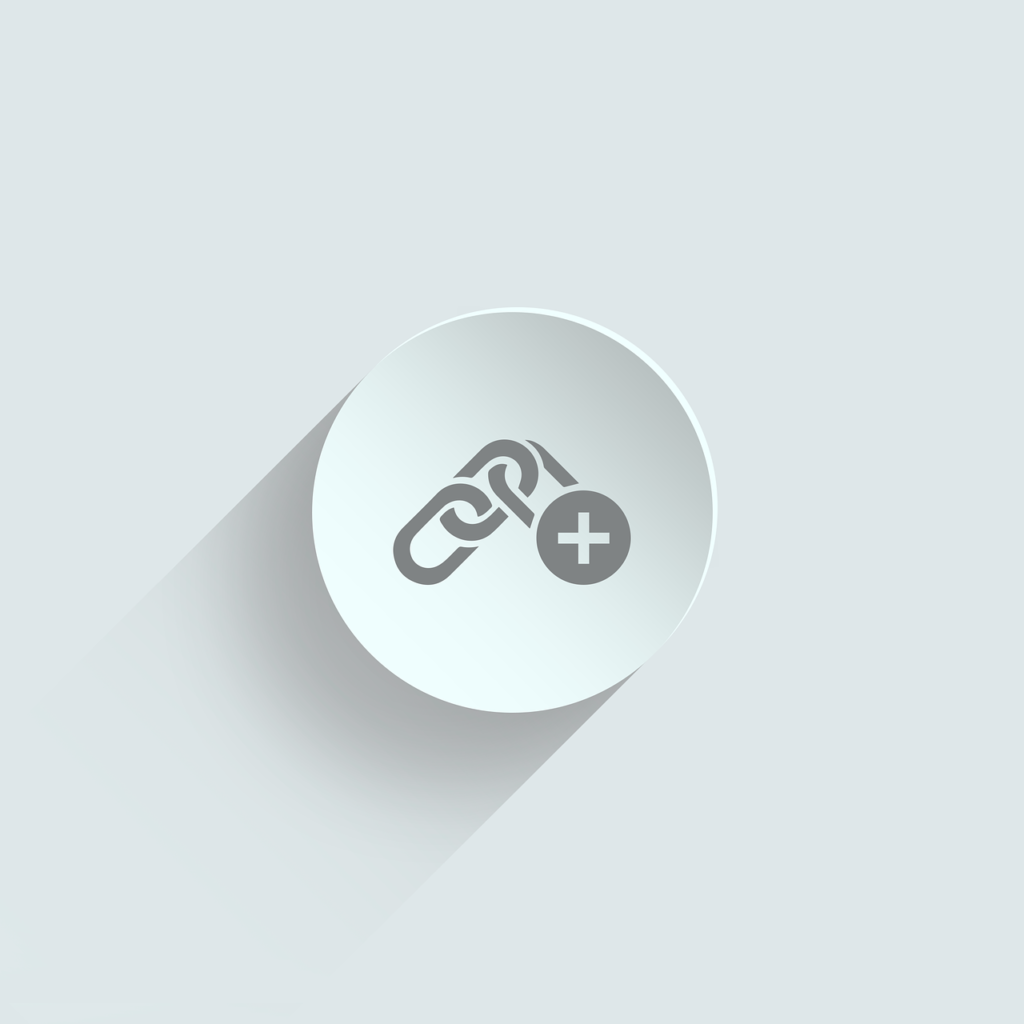
Poisoned Links: How to Spot Toxic Backlinks Before They Wreck Your Rankings
They creep in quietly with no red flags, no alarms, just a slow and silent siphon of your SEO power.
Toxic backlinks are the silent assassins of your site’s performance. They might be leftovers from shady link farms, negative SEO attacks, or rogue insertions on sketchy directories. You won’t always know their origin… but Google sure does.
And guess what? If they’ve tripped Google’s spam radar, your rankings are already slipping.
But you’re just in luck, since in this guide, you’ll learn:
- How to sniff out bad links like a search engine bloodhound
- What to ignore vs. what to disavow
- How to detox your backlink profile
- And the correct way to rebuild your site’s trust without starting from scratch

Ready to stop the invisible sabotage and start climbing back up? Let’s clean house.
What Exactly Are Toxic Backlinks?
Not all backlinks are created equal. Some are SEO gold, others are pure poison. Toxic backlinks fall into the second camp.
They’re inbound links that are a dead giveaway as “manipulation” to Google’s spam filters. And they don’t just whisper suspicion, they’re waving that red flag themselves.
Picture this 👇
- A hacked recipe blog links to your SaaS tool with “cheap enhancement pills” in the anchor
- Comment sections overflowing with 6,000 spammy backlinks all while yours is buried somewhere in the mess
- Mass-produced Web 2.0 blogs linking out to 500+ sites like it’s 2009
- Forum pages in Cyrillic, pushing malware and your homepage at the same time
Google’s algorithm can overlook the occasional weak link but if you start stacking these, the penalty hammer swings.
📉 What can happen?
- Parts of your backlink profile quietly lose all value
- Important pages get buried or your entire site takes a nosedive
- By-hand actions that force you to file reconsideration requests, just to breathe again
Google has started downgrading how much toxic links impact you by neutralizing their effects rather than punishing. But don’t get cozy with this announcement. It’s there to be efficient, and mercilessly so. Google’s just trimming its own processing overhead.
Where Toxic Backlinks Are Really Coming From in 2025
Toxic backlinks don’t just crawl out of shady directories and spam farms in 2025, they sneak in from the corners of your SEO hustle, partner deals gone stale, and affiliate chaos you forgot to check in on.
You don’t even need to mess up to get hit. From what I’ve learnt, all it takes is being online long enough to get the hang of the patterns.
👇 Here’s where the rot usually starts:
Cheap Links in Fancy Packaging
Still falling for those slick “guest post” pitches with DR70 sites for $20 a pop? Don’t.
- Recycled domains with fake authority
- Auto-published AI blogs with your link sandwiched between crypto scams
- Agencies mass-inserting the same anchor on 50 different “clients”
Most of them look polished at a glance. But under the hood? We all know that they’re ghost towns with no traffic and a backlink trail that smells like fraud.
Negative SEO, Still Alive and Kicking
It’s 2025, and yes, people are still paying to nuke competitors. Especially in aggressive niches like finance, CBD, or iGaming. Here are some underhanded things that I’ve seen recycled like yesterdays trash (or their content):
- Mass link drops from foreign forums
- Spam blasts in other languages to muddy your anchor profile
- Mirror sites pretending to be you, linking back with trash-tier anchors
And don’t be fooled, just because Google’s smarter now and uses advanced tools, doesn’t mean that it’s fool proof.
Old Link Deals Gone Rotten
Still remember the niche buddy you swapped links with in 2021? Their site’s now a crypto casino AI farm and your link’s still live. What’s mostly likely happened is:
- Guest posts turned into spam funnels
- Swaps from “bloggers” who sold their site to resellers
- Pages you once trusted, now filled with off-topic trash
Do not assume that links stay safe. Sites change. So should your trust.
Parasite SEO Blowback
Used Medium, Quora, LinkedIn, or Notion for parasite SEO campaigns? Sorry to be the bearer of bad new, but it’s highly likely that:
- Deleted posts are still showing up in backlink profiles
- Edited links lead to junk
- Cloaked redirections have been set up after the platform cleaned house
What starts as a shortcut can turn into a trap if you don’t monitor those links.
Sitewide Footers from the Archive
Do you still have your agency link in a theme footer from 2014? Cool. Also risky. The blame usually lies with the following:
- Repeats the same anchor hundreds or thousands of times
- Usually from unrelated, outdated sites
- Screams “manipulative pattern” to Google
Keep links to relevant places. One per domain. No spammy footprints.
The Process of Identifying Toxic Backlinks Like a Pro (Without GSC)
So now you know where the digital junk comes from. Next up we’ll teach you how to sniff it out like a bloodhound on caffeine.
And spoiler alert: Google Search Console isn’t going to be a saving grace in this case. It’s like asking your grandma to do threat detection. GSC shows only a slice of your links and won’t warn you until you’ve already taken a hit.
You need real tools. Real patterns. Real skepticism.
So, a little tutorial for how to dig through the dirt:
Pull Everything And Not Just What Google’s Showing
You want the entire backlink map, not the filtered view Google gives you when it’s already too late. Use actual tools that crawl wide and deep.
Recommended tools:
- Ahrefs – Spot anchor overuse, link spikes, and historical trends
- Semrush – Strong toxicity scoring + trust signals
- Majestic – Good for trust vs. citation ratios, especially for niche sites
- LinkResearchTools – Heavy-duty, but overkill unless you’re dealing with a mess
✅ Export:
- All dofollow links
- All nofollow links
- All sponsored/UGC tags, if available
No tool catches it all. Run exports across platforms and compare. Think like an algorithm, not a checklist.
Hunt for Anchor Text Misuse
Anchor text tells the story and sometimes, it’s a horror story. Red flags to catch:
- Exact-match anchors cloned on multiple domains
- Anchors in foreign languages with zero relevance to your blog
- Sketchy terms like: crypto hacks, adult cams, loan approval, online betting
- Gibberish phrases that aren’t there on your site but direct straight to it
Does the anchor look aggressive or totally irrelevant and it’s sitting on a trash-tier page?
Mark it. It’s toxic.
And don’t ignore “just one” weird link. Patterns build fast.
Watch for Link Velocity Changes
Did you go from 20 links a month to 200 in a week all of the sudden? Even if you didn’t place those links yourself, somebody else did. And Google notices.
Sketchy spikes usually come from:
- Junk domains
- Non-English pages with commercialized anchors
- Auto-published content with zero context
One solution for that could be to chart your velocity weekly. If the slope turns into a cliff, start digging.
Check Domain History & DNA
That blog linking to you – was it always a blog? Or was it a vape store in 2017, a crypto pump site in 2020, and now suddenly an “AI content marketplace”?
Use:
- Archive.org – To see what the domain was previously
- Whois history – To track ownership changes
- Ahrefs “Best by links” – To see which pages are still earning links
If the domain went from legit to link farm, it’s no longer a friend. It’s dead weight.
Look Around the Link – The Link Neighborhood Matters
Google sees who your backlinks are hanging out with. And guilt by association is real.
It’s a blaring red flag if a domain linking to your blog also links to:
- Payday loans
- AI casino blogs
- Sketchy crypto chains
- Explicit or pharma content
…it’s a toxic neighborhood. And you just happen to be stuck in the same residential building as them.
So, don’t just audit the page linking to you, since it’s better to audit who else it’s linking to. Context is everything.
Check Indexation And Real-World Value
If a link lives on a site no one visits, or worse, a page Google hasn’t even indexed? It’s not helping. It might be hurting your rankings, even.
Telltale signs of a toxic page:
- Not indexed in Google
- Gets zero traffic
- Flatlined domain growth
Even if the link passes nofollow – it still tells Google something about your “associates.” Make sure it’s saying the right thing.

How Do You Remove Toxic Backlinks Without Nuking Your SEO
Alright, you’ve found the rot. Time to grab the scalpel, not a sledgehammer.
Here’s where most SEOs mess up: they panic and start disavowing anything that looks slightly off. Don’t be that person.
Google’s smarter than it was a few years ago. Unless you’re doing a manual action, mass disavows might do more harm than good. But if traffic’s tanking, pages are vanishing from search, or your backlink graph looks like a scam coin chart?
Let’s clean house – the right way.
1: Decide What It Is That Needs to Go
Not every ugly link is a problem. It’s the patterns, not the pixels, that get you flagged.
Here’s a smarter triage system for deciding what to cut:
| Toxicity Level | Case Study | What To Do |
| 🔴 High | Links from hacked news sites, anchors like “quick loan for bad credit,” spun posts on expired .ru forums | Disavow right away– these scream manipulation |
| 🟠 Medium | Guest post mills with 20+ outbound links/page, abandoned niche directories, old link swaps now on AI blogs | Monitor closely, disavow if pattern repeats |
| 🟢 Low | Low DR but real mentions (e.g. hobby blogs), scraper duplicates, nofollow links with generic anchors | Leave it alone – they’re not hurting you |
If a link has no anchor text, is nofollow, and is on a dead site that’s not even indexed? Forget it. Google’s already ignoring it.
2: Try Removing It Manually (If You Want To Invest the Time)
Disavow is the last resort. Sometimes, all you need is a polite nudge.
Use tools like:
- WhoisXML to check ownership
- Hunter.io for email discovery
- LinkedIn for direct outreach to site editors or authors
You can formulate it something like:
Subject: Suggested Fix for a Misplaced Link
“Hey (Name),
I came across a page on your site ([link]) that’s linking to an outdated or incorrect version of our content.
Could you remove or update it whenever it fits your schedule? Totally appreciate your help, happy to return the favor if needed.
Thanks in advance!”
If they ghost you? No sweat. That’s what disavow is for.
3: Title Your Disavow File Properly
This part’s easy to mess up. Don’t overthink it, just follow the rules.
- Use a .txt file (UTF-8 format)
- One domain: line per full domain disavow
- One URL per specific page you want blocked
- Use # to leave notes
Here’s an easy example after all that technical jargon:
Then upload your file here 👉 Google Disavow Tool
Make sure you’re submitting it to your exact property (non-www, https or whatever Google has indexed). Otherwise, it does… nothing.
4: Monitor What Happens Next
Disavows don’t work overnight. But if you’ve cleaned the right stuff, you’ll start seeing shifts within 30 to 90 days.
Here’s what to watch for:
- Backlink drops in Ahrefs/Semrush
- Suppressed pages reappearing in Google Search Console
- Junk domains vanishing from the profile
- Link spam penalties quietly lifting
Track every change. Keep a spreadsheet. Watch the patterns shift because Google does respond, just not loudly.
Debunking the Disavow Myths
There’s no shortage of backlink mythology floating around SEO circles. Some of it sounds legit but sadly most of it is junk. Let’s set the record straight:
“You need to disavow monthly”
Nope. This isn’t browser cache. Unless you’re actively under attack or recovering from a penalty, frequent disavows are just digital busywork.
“Toxic links are going to always hurt you”
False. Many get ignored. Some even pass value if they look organic. Google’s smarter than you think and lazier than you’d hope.
“Disavowing fixes all penalties”
Not even close. If you’re still pumping garbage links into your site, disavows are just putting a bandage on a broken bone.
“Disavowing good links can hurt you”
Absolutely. One misfire and you’ve nuked your most powerful backlink. Double-check before cutting anything that isn’t bleeding.
Is There a Way to Prevent Toxic Backlinks from Getting In
Cleaning things up is great. But real SEO power comes from prevention by building a backlink moat that keeps the trash out before it hits your front yard.
Here’s a step by step on locking your link profile down like a fortress:
1. Vet All the Link Like It’s a Security Risk
Guest posts, swaps, purchased placements, it doesn’t matter. Scrutinize everything.
Ask yourself:
- Is the domain indexed and actually ranking?
- Are their links pointing to casino, crypto, sketchy loan sites?
- Do their articles look human or like they were spat out by ChatGPT on Red Bull?
- Are there more than 30 outbound links in a single post? That’s not a blog, that’s an entire billboard.
- Does it feel like they accept any link for any site in any niche?
One quick tip is to run different URLs in Archive.org. If the domain was a gardening blog last year and now it’s a fintech guest post farm? Bounce. It’s a ticking time bomb.
2. Monitor Your Anchor Text Like It’s a Blood Test
Anchor ratio is your profile’s pulse. If it skews too hard toward exact matches, you’re setting yourself up for an algorithmic slap.
Healthy target ratios:
- 🔵 60% branded and/or naked URLs
- 🟡 30% partial match
- 🔴 <10% exact match
- ⚪ 10% generic (e.g., “read more”, “visit site”)
If your backlink profile reads like it was optimized by a desperate Fiverr gig? Rebalance. Fast.
3. Re-Audit Aged Links Like It’s Spring Cleaning
Links age. So do domains. A site that was clean in 2022 might be a spammy AI farm today.
Every 3 to 6 months:
- Pull fresh data from Ahrefs or Semrush
- Re-check against your disavow list
- Look for anchor swaps or new outbound junk
- Mark the domains that changed ownership or added spam
Just so you don’t sabotage yourself in the process, stop assuming a “good link” stays good. It won’t. Google audits continuously. So should you.
4. Lock Down Affiliate & Outsourced Links
Unmonitored affiliates or contractors = wildcards.
Red flags to watch for:
- Cloaked redirects
- Spammy forum drops
- AI-generated blog networks
- Freelancers dropping exact-match anchors on low-rent sites
Set rules:
- No redirects
- Clear anchor variants and destination URLs
- Periodic spot-checks using reverse searches or SEO tools
Even one runaway affiliate can quietly poison your profile for months before you notice.
5. Avoid Dirty Link Neighborhoods (Unless You’re Built for It)
Look, if you’re in crypto, gambling, or pharma, you’re already living on the edge. You know what you signed up for.
But if you’re running a SaaS brand or managing a local business, and those backlinks are coming from sites that moonlight as SEO farms for payday loans and casinos?
You’re now part of that pattern.
Google doesn’t care that you’re “just a roofing company.” It sees the neighborhood but not the backstory.
Final Words: What Your Link Profile Says About You
Your backlink profile is your digital fingerprint Google reads it like a résumé, and just one shady reference can cast a long shadow over everything else.
Toxic links don’t shout. They whisper.
They creep into your profile silently, chipping away at rankings, credibility, and trust. Sometimes they show up because of mistakes. Other times, you inherit them. Occasionally, they’re dropped on you by someone with bad intentions.
But now? You’ve got the roadmap.
✅ You know how to hunt them down
✅ You know what to ignore vs. what to remove
✅ You know when to disavow — and when to hold your fire
✅ You know how to build a barrier that keeps the next wave out
Modern SEO isn’t just about chasing links. It’s about managing what you already have – and knowing when to say goodbye to the baggage.
Whether you’re recovering from a drop, prepping a new project, or just tightening up your current site… keep your link profile clean, your instincts sharper than your tools, and never let complacency cost you rankings.
To wrap it all up, here’s what matters most:
- Toxic links are more about patterns than individual links
- Use multiple tools to get the full backlink picture
- Disavow only when necessary, not as a monthly ritual
- Prevent future spam by vetting sources, tracking anchors, and auditing old links
- One bad affiliate or expired guest post can unravel your trust so stay proactive
- 📉 Suppression isn’t always a penalty but it is often a signal. Clean up and you may bounce back
Your backlink profile is your digital reputation.
Audit like your rankings depend on it. Because they do.





